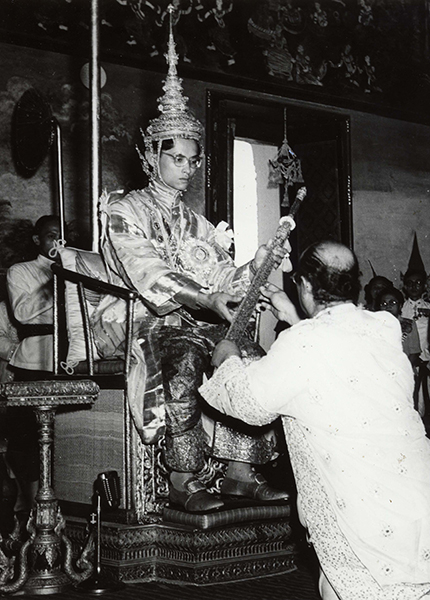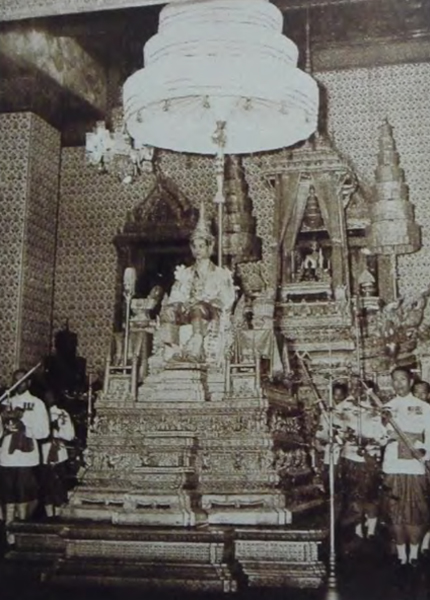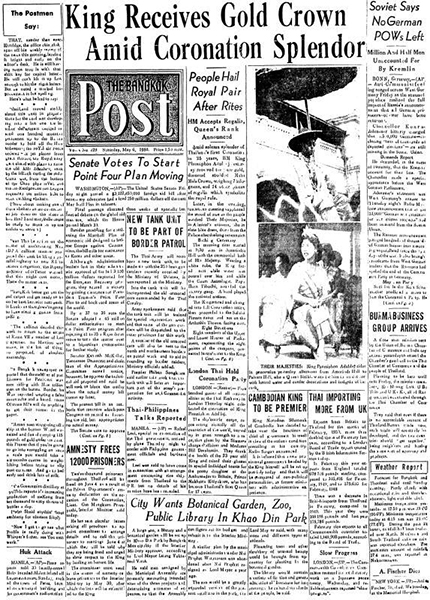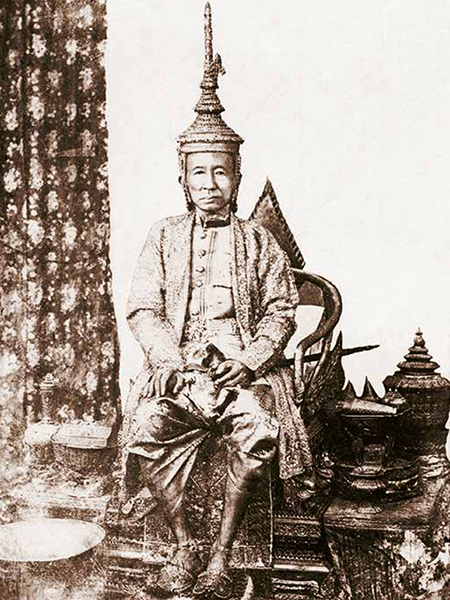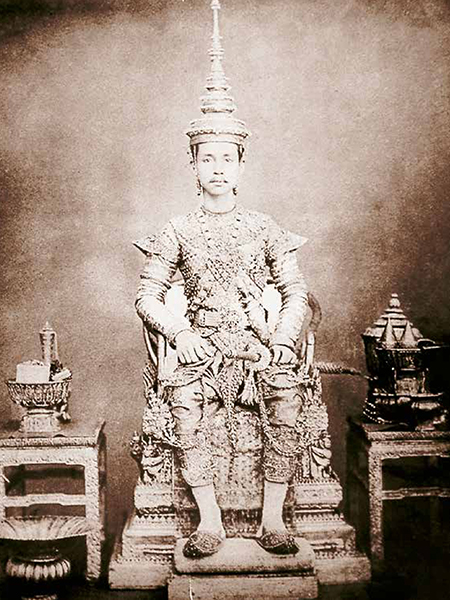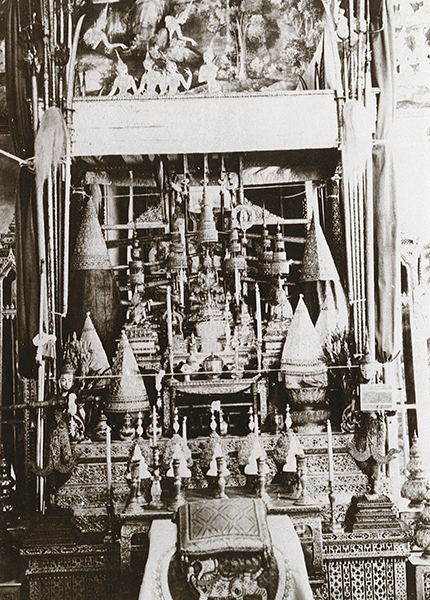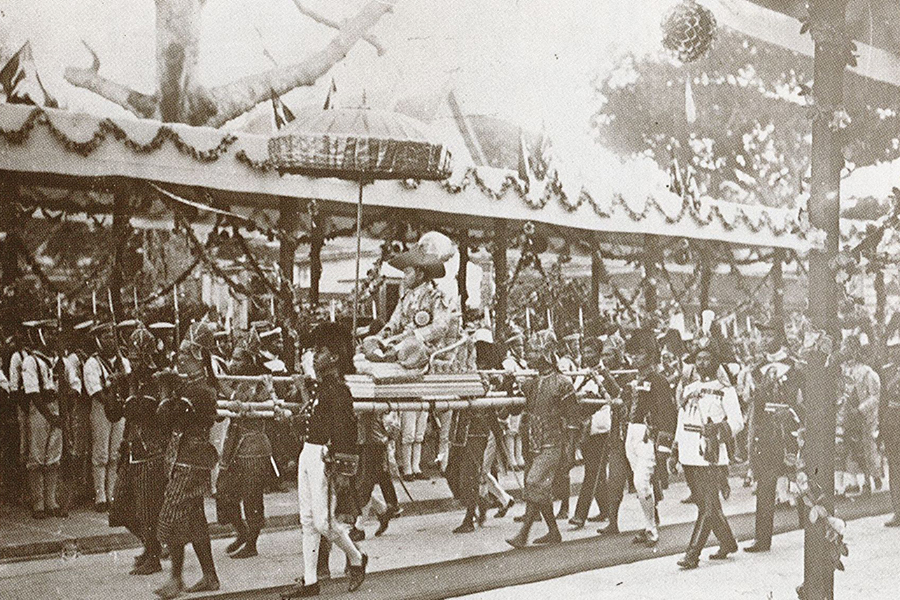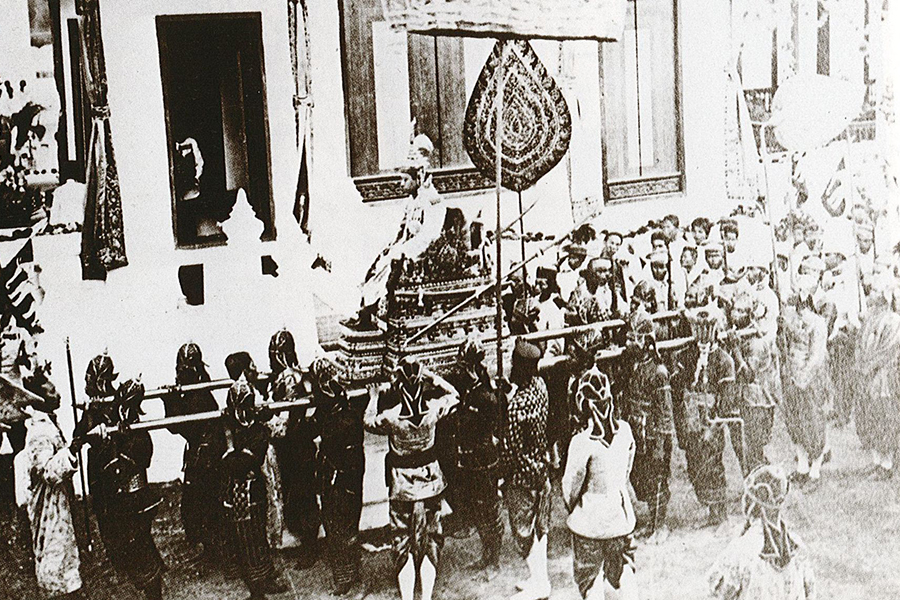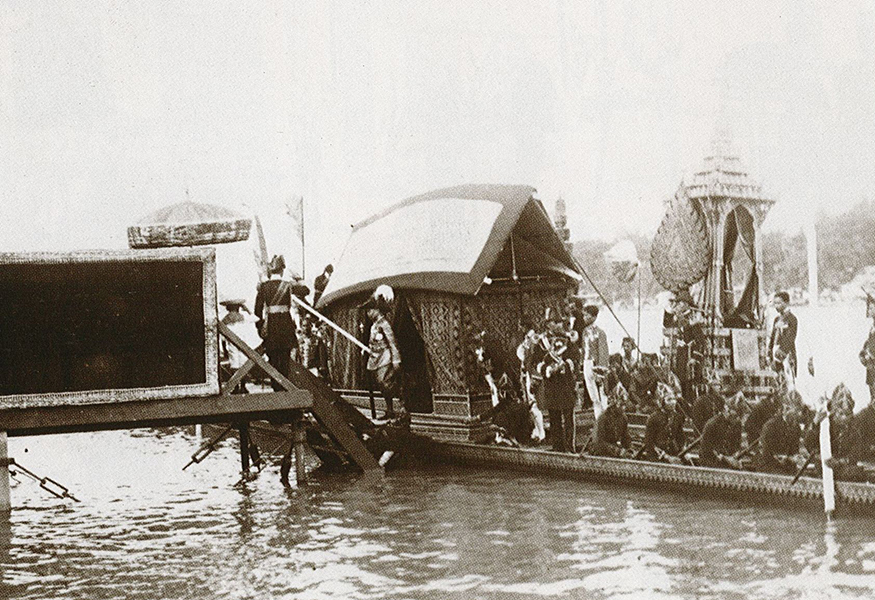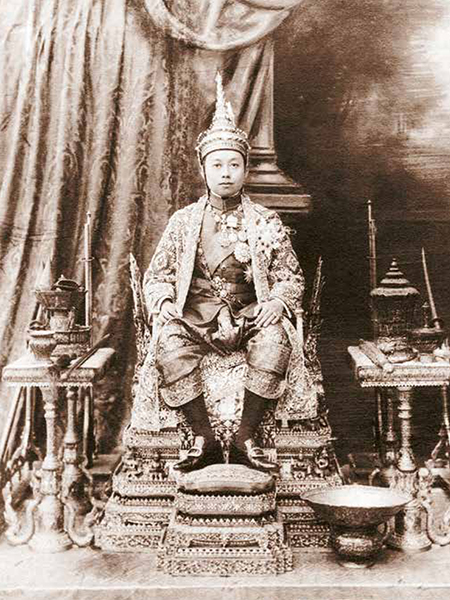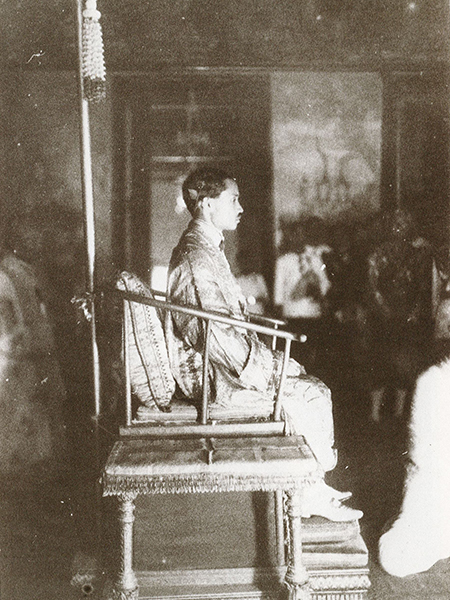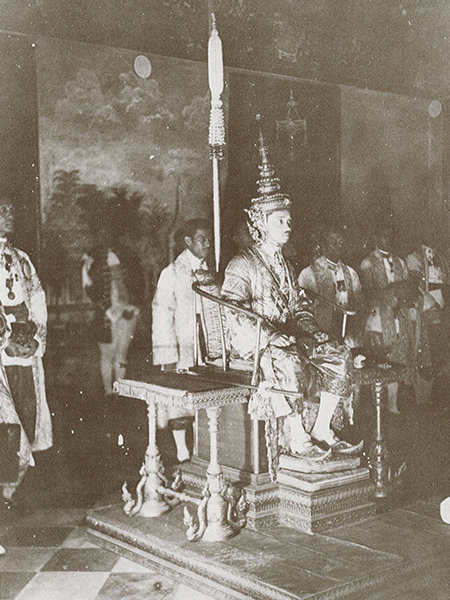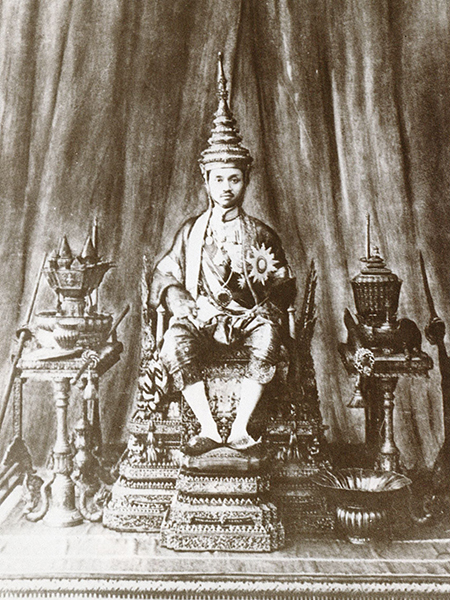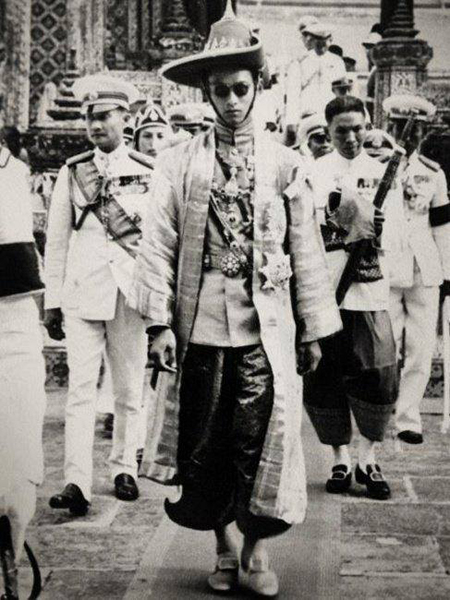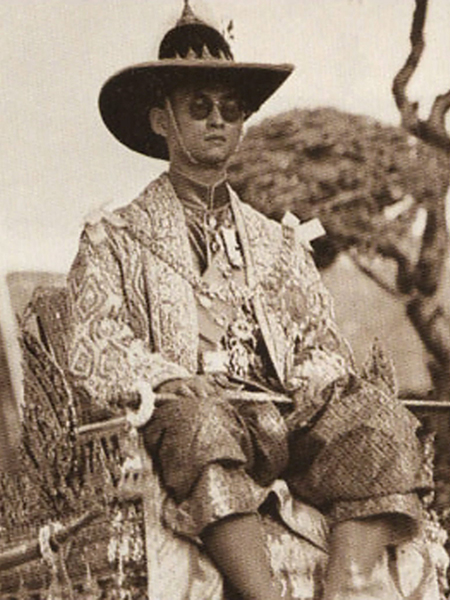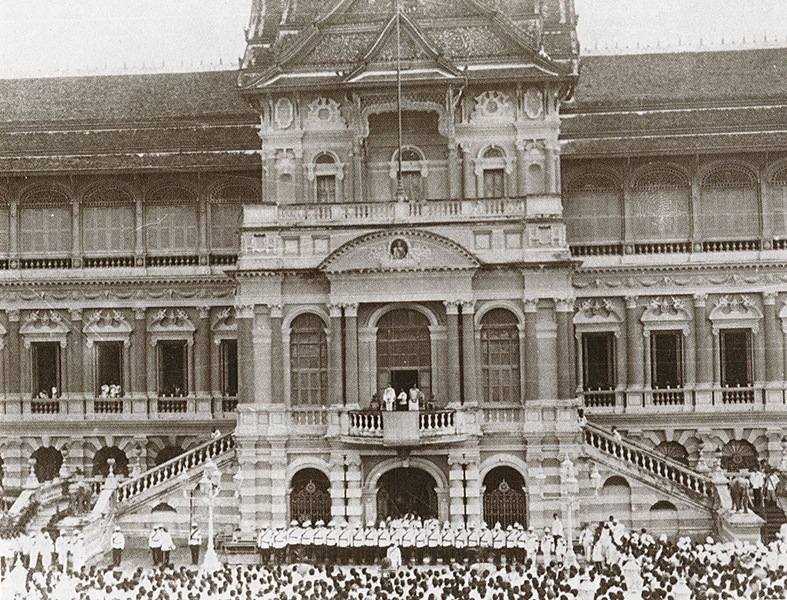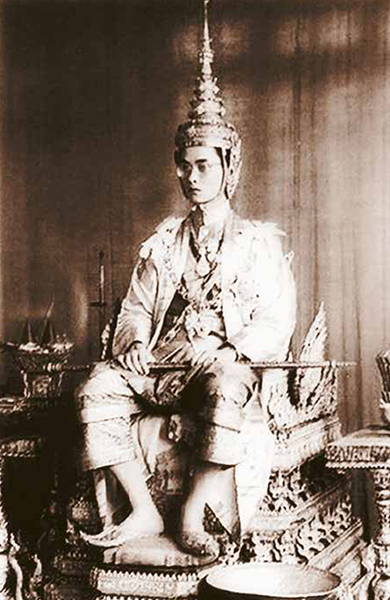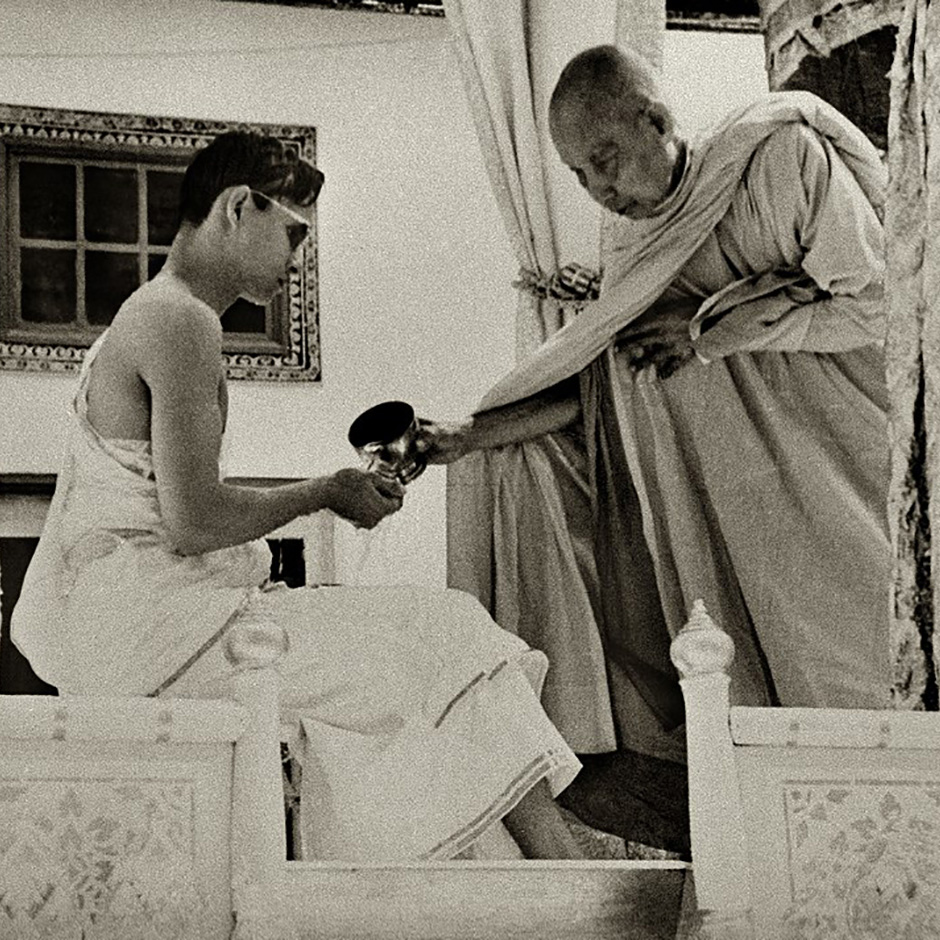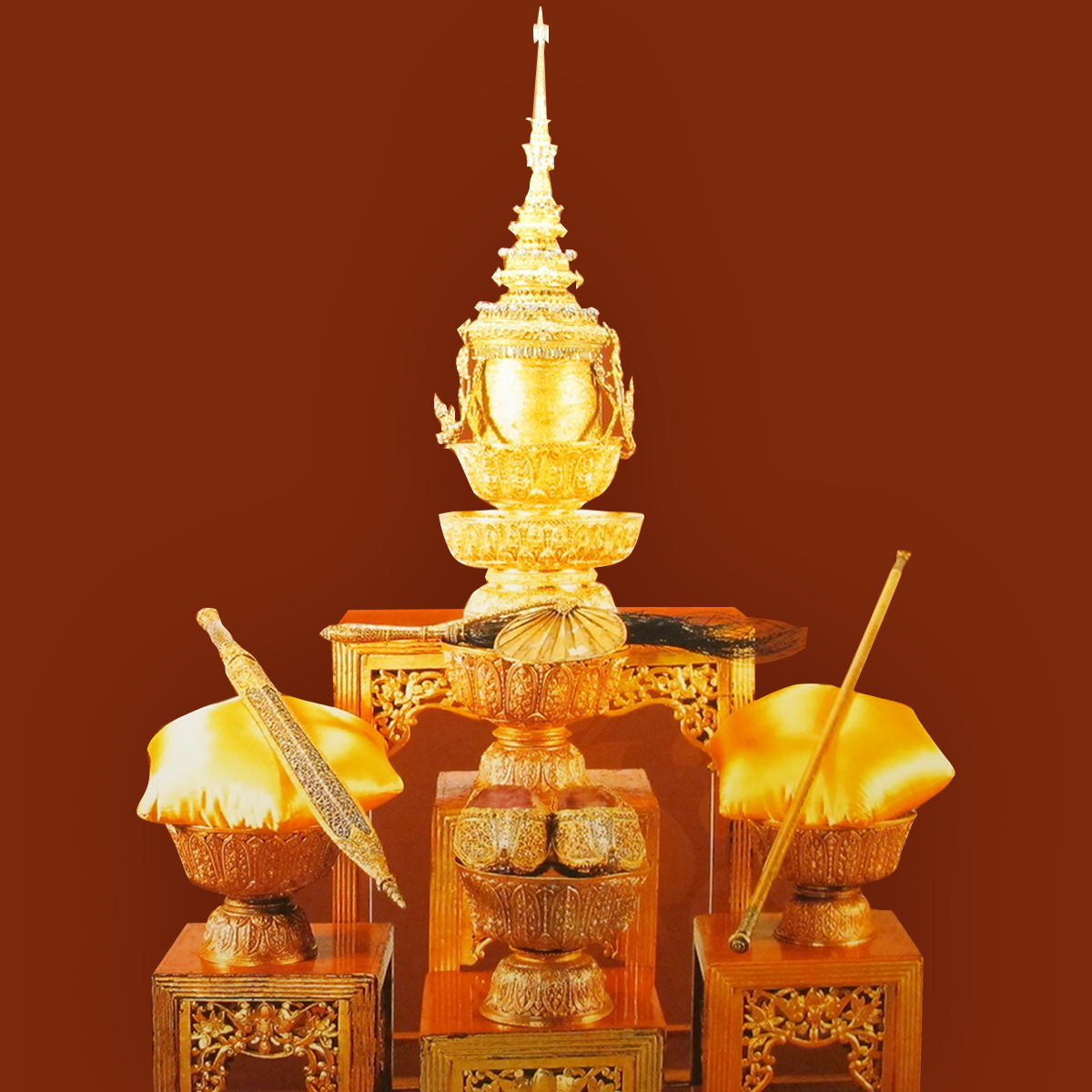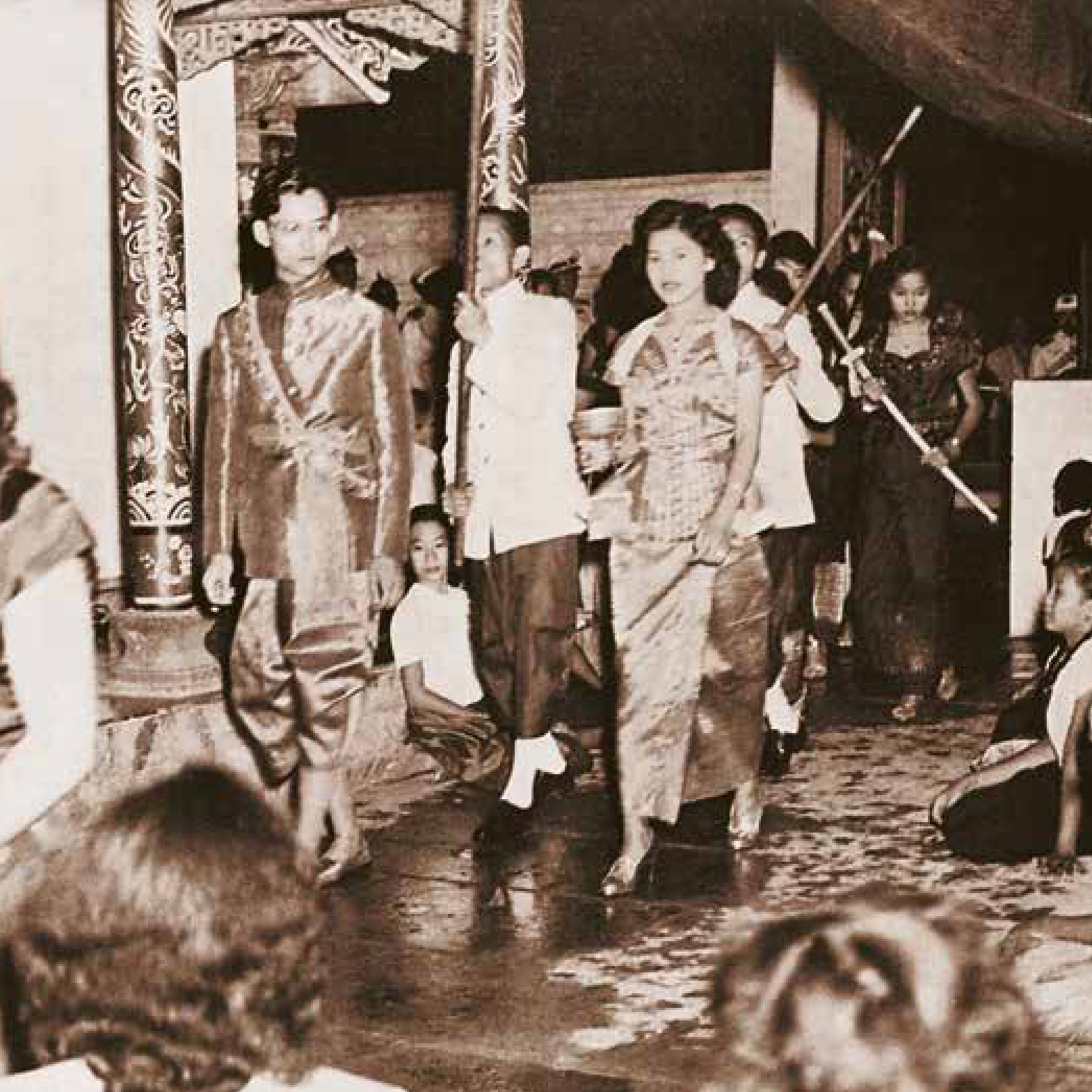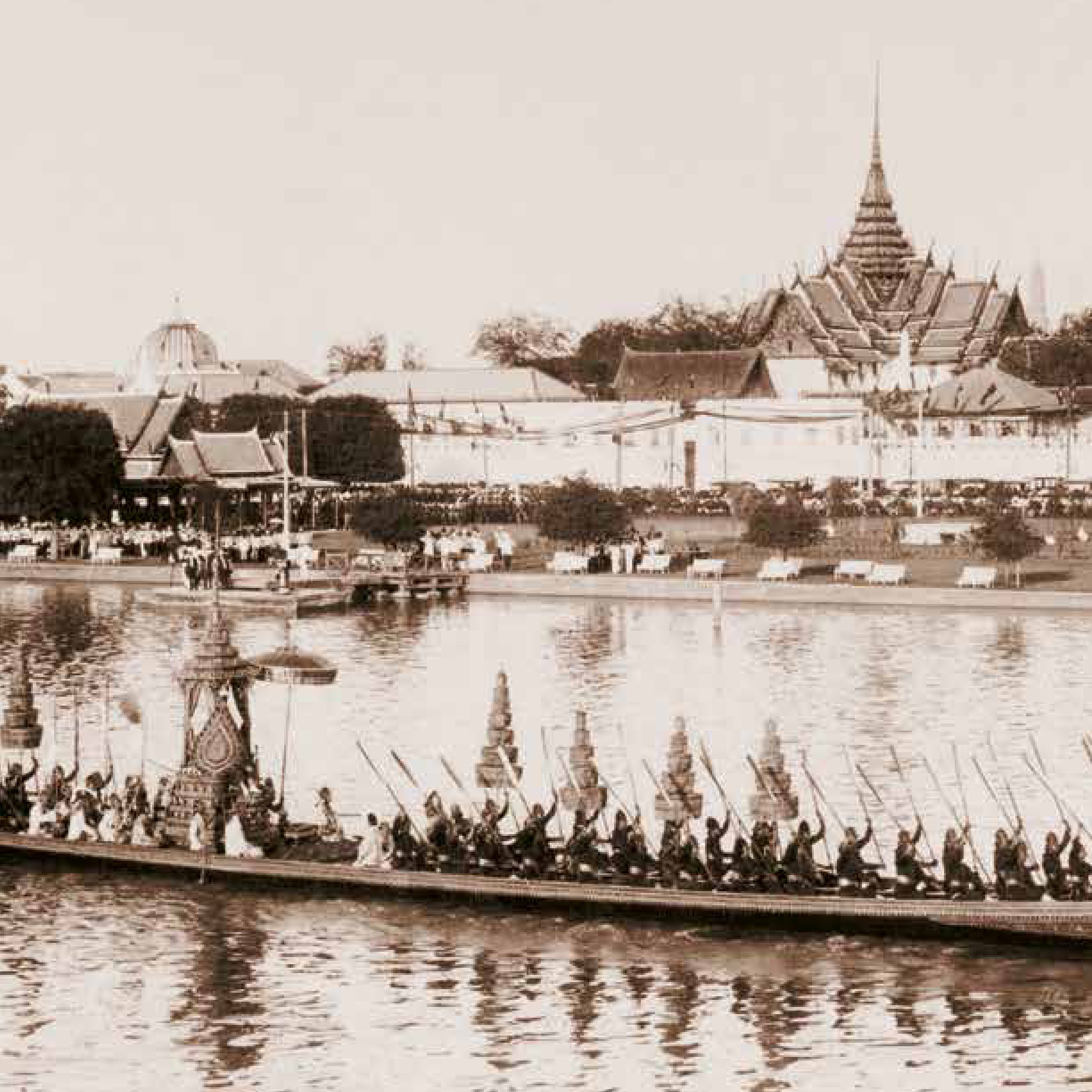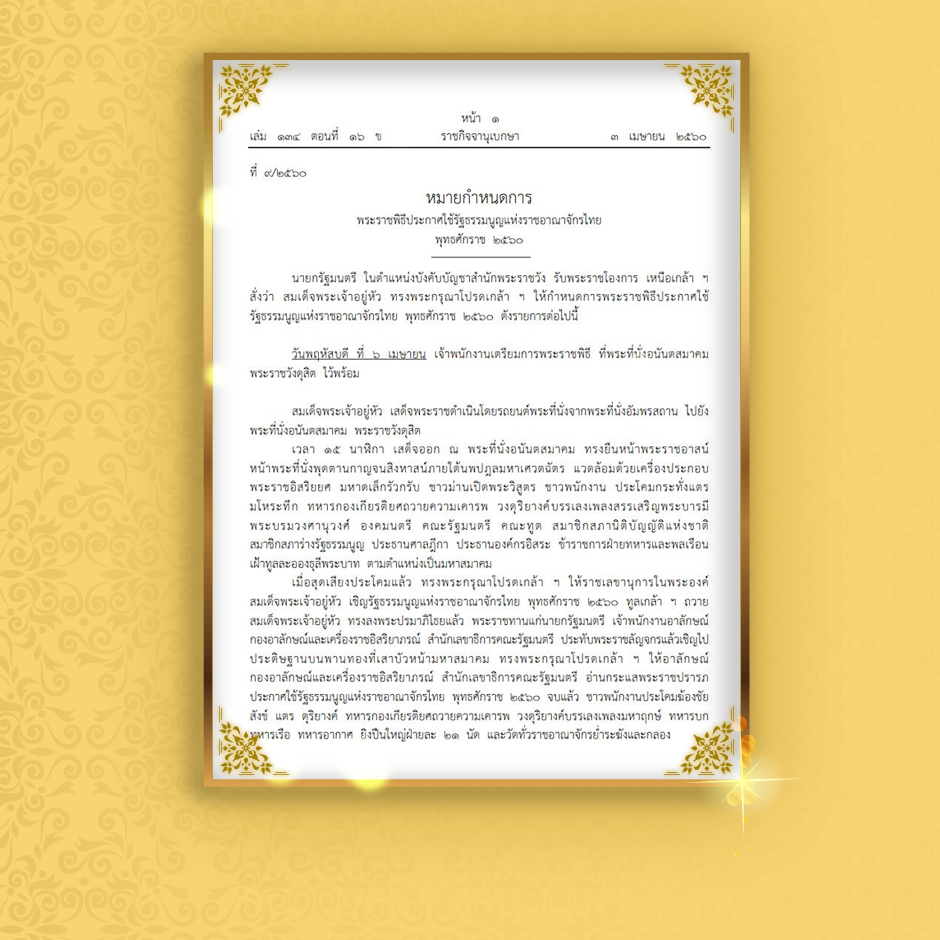In an archive on the coronation ceremony, King Rama VI wrote that a successor to the throne would not be considered a full king, his order not a royal command, until the coronation is performed.
“Only when he had been purified with sacred water in the Royal Ablution Ceremony, the Song Muratha Bhisek, and when he had received the Golden Plaque inscribed with his official title name and received the Royal Regalia, given by the chief Brahmin who conducted the ceremony, only then would he become the official King.”
Available evidence suggests that the coronation custom dates back to the early Sukhothai period in the 13th century.
According to the Stone Inscription No 2, also known as the Wat Sichum inscription, King Pha Mueang appointed Pho Khun Bang Klang Hao as the first king of Sukhothai by anointment, giving him the official title of Si Indra Bodindradit.
Another inscription mentioned that the Royal Regalia, namely the Sword of Victory and Royal Tiered Umbrella, were included in the coronation of King Lithai (1347-1368).
For the Ayutthaya period, old records refer to the use of fig wood to construct a bench-throne during the ablution ceremony as well as a presentation of the quintet of the Royal Regalia to the king during the coronation ceremony.
The Royal Coronation Ceremony in the Rattanakosin Era was modelled after that of the Ayutthaya period, after King Rama I, the founder of the Chakri Dynasty, had a committee set up to research how the crucial ritual had been conducted.
When King Rama I moved the capital away from Thonburi and founded Bangkok in 1782, his coronation was simplified because the situation was still unstable.
Still, it was the King’s wish to restore the grandeur of the royal court of Ayutthaya along with its centuries-old customs. The committee he set up to look into records from the earlier period finally came up with a manual for royal ceremonies, including the coronation.
Once the manual was completed, along with the construction of the Grand Palace, King Rama I had the Royal Coronation Ceremony performed again in full scale according to the revived procedures in 1785.
Since the Chakri Dynasty was established, the Kingdom has witnessed 11 coronations held by eight kings.
Some kings — Rama I, Rama V and Rama VI — each held the coronation twice for different reasons. King Ananda Mahidol, Rama VIII, passed away before his coronation ceremony could be held.
The last coronation to take place in Thailand was that of King Bhumibol Adulyadej, Rama IX, almost 70 years ago on May 5, 1950.
The coronation ceremonies of Thai monarchs vary in details yet they follow these main elements. Preparations for the royal ceremony include the gathering of water from different sources to be consecrated for use in the ablution and anointment ceremony, an inscription of the golden tablet bearing the king’s official title and the engraving of the Royal Seal of State.
The Primary Royal Ceremonies features the purification bath of the king and the royal anointment. After that, the crowning and investiture ceremony in which the king is presented with the Royal Regalia is held.
The Final Royal Ceremonies include the Granting of an Audience, the Declaration of Faith, the Assumption of the Residence, and Circumambulation of the City.
(Sources & photos: The Royal Coronation Ceremony, Ministry of Culture)

